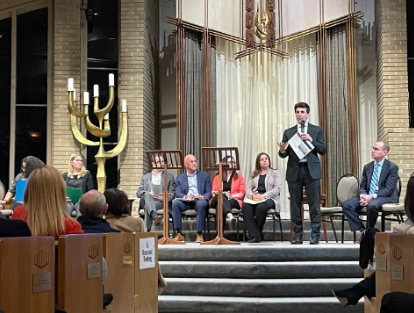It’s not any kind of falsity or exaggeration to say that Westport teenagers expressoccasional hatred for the town they live in.
“I really, really do not like Westport for the most part,” Jessy Nelson ’16 said bluntly.
As with any suburban town, it’s easy to see the downsides to living in a place that can be (as compared to big cities) culturally limited. However, Westport is ripe with history and culture that many people may not appreciate – mostly because they are unaware of it.
Since before the Common Era, Westport has been filled with scavengers and entrepreneurs. According to “Westport, Connecticut: The Story of a New England Town’s Rise to Prominence” by resident author Woody Klein, campsites over 4,000 years old have been discovered in Westport.
Brynn Schumacher ’17 said that she had no idea that Westport was discovered so long ago. “Honestly, I thought the first settlers came here around, like, 1940,” she said.
However, even though people inhabited Westport so many thousands of years ago, it was not until the fall of 1648 that the seeds of modern-day Westport were planted.
Klein explains the significance of the Bankside Farmers, the very first white settlers in Westport. Even though the Bankside farmers were largely responsible for creating this town, many people are unaware of who they even were. “I have no idea what that is,” Schumacher said, when asked about the Bankside farmers.
Klein explained that these men were “[…] five farmers from Fairfield ‘with Yankee knack for a good bargain.’ [They] acquired a strip of land along the coast from the home of the Indians of Machamux.” This area, which was named after the tribe, soon became extremely successful and even caught the eye of Fairfield’s town fathers. The location they chose was stunning, with open fields that were sometimes interrupted by glittering ponds and streams, as well as tidal salt meadows full of wild grain and shellfish. More and more people were attracted to Marchamux over time, and other farmers from Fairfield wanted to join the Bankside farmers in the area that would later become Westport.
Machamux marked the beginning of an era of growth of Westport – growth that would also be contributed to by the church. According to “Westport, Connecticut: The Making of a Yankee Township by Edward Coley Bridge, “The backbone of all American settlement at the beginning was the church […] The Greens Farms church [served as] local self government.”
However, the growth of the town as a result of the flourishing local economy and government was interrupted by the Revolutionary War. As a result, Westport did not become a town until almost two hundred years after the first white settlers arrived. As Klein says, “On May 1835, the State of Connecticut granted the petition to incorporate Westport as a town […]” Since this monumental moment in which Westport became a town, countless other monumental moments have made it into a very special town, as the book “Stories from Westport’s Past” by Joanna Foster details.
Foster describes the battle for Compo Beach, the overabundance of onion that was once grown by local farmers, the little stories behind road names in Westport and the story of Samuel Burr Sherwood (one of Westport’s first lawyers) serving in Congress.
Even with all of these stories, there are many untold and unheard ones that contribute to the history and charm of the little town that we call home – hopefully, no longer reluctantly.















































